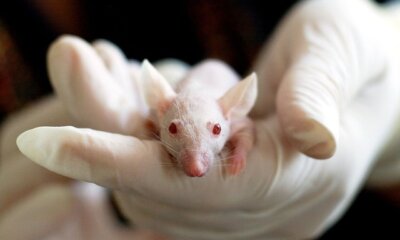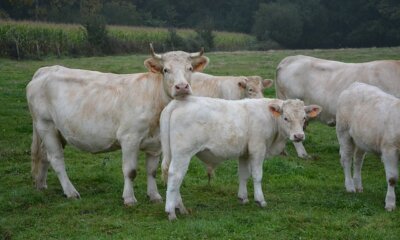Home > Veterinary news from industry experts > Page 6
Veterinary news from industry experts
For the UK’s millions of laboratory animals, the 3Rs aren’t about Reading, Writing and Arithmetic. Instead, they’re three letters that spell out the legal and ethical responsibilities of veterinary laboratories.
Read More
Over the 2016-17 Christmas fortnight of 20 December to 2 January, Dog’s Trust received 127 unwanted dogs and puppies – a 54% increase above the figure for the same period in 2015-16.
More than 300 animals given shelter
Over the whole of the festive season, the charity gave shelter to more than 300 animals but also received an average of 70 calls a day from people wanting to give up their dogs in the weeks immediately before and after Christmas.
Read More
Paramphistomiasis, or rumen fluke, is of increasing interest as a parasitic disease of livestock producing a range of non-specific symptoms including diarrhoea, weight loss and general weakening.
Paramphistomes are two-host trematode parasites that spread their lifecycle between mammals and molluscs.
Read More
In the 5 years between 2010 and 2015, there have been 455 UK ‘big cat’ sightings reported from locations all the way from Cornwall to Cumbria. What kind of cat, no one’s really sure. But it’s generally considered likely to a lynx, panther, a puma or even a lion.
Read More
You know your cat has his or her own unique personality. Now studies in New Zealand and South Australia have shown that understanding your cat’s personality can help owners and vets give pets a happier, healthier life.
Read More
Whether it’s the chronic pain of illness and age or the acute pain of accident and intervention, it’s generally accepted that animals experience not just pain, but emotional distress. But how to recognise and evaluate pain in animals? The Glasgow Composite Pain Scale (GCPS) provides an objective assessment.
Read More
Five newly recognised viruses could be of serious future concern to dog and cat owners as well as to veterinary practitioners specialising in companion animal infectious diseases.
Feline morbillivirus (FeMV) is a new paramyxovirus closely related to dog distemper virus.
Read More
Britain’s best-loved pet dogs get the protection of immunisation against distemper, parvovirus, adenovirus, leptospira, parainfluenza virus, bordetella and rabies. Reputable kennels and breeders offer UK dog owners healthy pups with the confidence assured by routine vaccination and canine diagnostic testing.
Read More
Diagnosing Feline Peritonitis (FIP) requires a veterinary test that can detect antibodies to the widespread Feline Coronavirus (FCoV). FASTest FIP, FASTest CoV Strip and FASTest RIVALTA FIP-VETube help provide a vital early warning of the possible presence of the FIP mutant strain.
Read More
The donation of blood and receiving of blood transfusions is a regular lifesaver in human medicine. Animals too often need a vital transfusion following an accident, during an operation or to treat blood disorders including anaemia and low red cell count, diagnosed in the veterinary laboratory.
Read More











